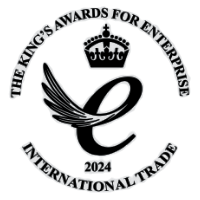More similar than not
Comparing English sparkling against champagne is a legitimate exercise. Both originate from a topography of vineyards set on gently rolling hillsides, where the climate is more similar today than ever before. Both are largely produced from the same three grape varietals of Chardonnay, Pinot Noir and Pinot Meunier. Both employ the same production methods and are made under conditions that promote the highest quality.
Champagne production has been highly regulated since the phylloxera devastation of 1898 and protected under AOC status since 1936. English sparkling wine hardly has that history, nor quite as multi-layered a set of restrictions, but production here is also regulated to achieve Protected Designation of Origin status in the UK.
What's different?
So if topography and production methods are comparable, where do the differences lie? Most obviously, they start in the ground. Every vineyard in England and Champagne is planted for its amenable orientation and best chance of producing good fruit. For that reason, walk through an English vineyard and you'll find the vines tend to be planted less densely than in Champagne and trained higher on the trellis. That's because of England's fractionally cooler conditions. These methods allow more sunlight to reach the bunches as they ripen.
For the same reason, canopy management techniques in England may differ in how the canopy of leaves on each vine is managed to distribute the available sunlight and warmth down to the grapes, and so attain the desired level of ripeness.
The differences that are created in an English sparkling and a champagne winery today are the product of the house's choice rather than country. Just as Krug differs from Pol Roger differs from Bollinger, so the taste profiles we create at Gusbourne differ from those of other English producers.
Historically, that wasn't always so. In the days of Napoleon, all champagne was sweet and remained that way until the 1880s, when many houses began refashioning their offering into a drier style, called le goût anglais, in direct response to pressure from their biggest export market, England.
The bigger story
The commonalities of environmental conditions and production methods mean champagne and English Sparkling Wine are not generically different entities. At heart, if contrast exists it's not between two nations' products but the characteristics that distinguish one maker from another, regardless of which side of the Channel they live on.
The bigger story for consumers should be how the quality of English Sparkling Wine has increased phenomenally over the past two decades.
"Does English sparkling wine stack up? Its reputation is deservedly growing. In the last decade we've become serious international players." That was Tim Atkin in 2010. Six years later at a Wine and Spirit Trade Association blind tasting in Paris, English sparkling wines (including Gusbourne's Rosé, forgive us for mentioning) were overwhelmingly preferred to comparable champagnes by an exclusively French panel.
And if proof of improvement were needed from the other side, it's not accidental that champagne giants Taittinger and Pommery have both recently reached the same strategic decision to buy significant land and plant vines in Hampshire and Kent, ahead of releasing their own English Sparkling Wines in years to come.
Always advancing
There are multiple reasons why English Sparkling Wine is of such high quality today, from advancing viticultural technology and knowledge to increased sector investment and market appetite. Good news all round. The character of this unique product continues to develop and create its own story.
You may also like...









